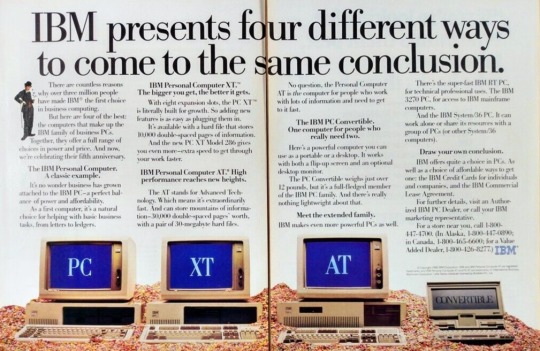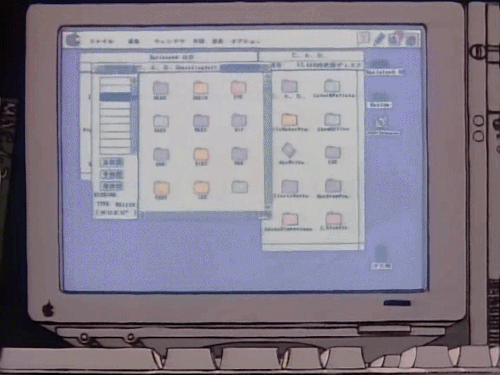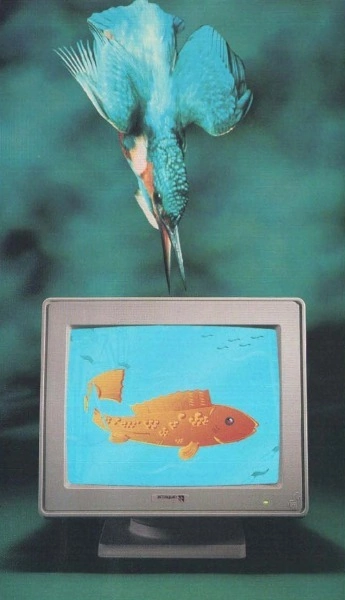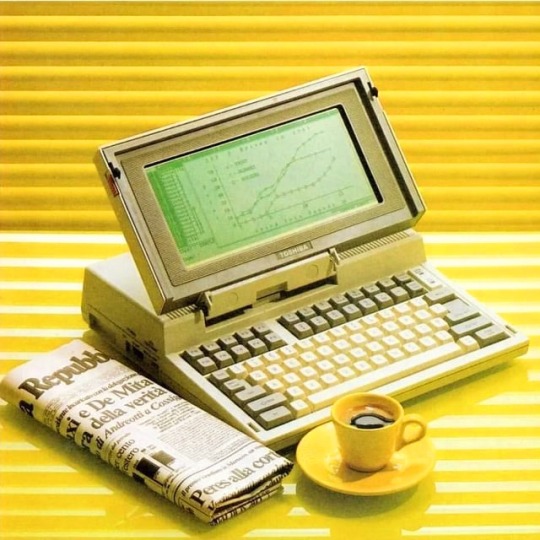#computer information technology
Text

yes yes feeling extremely accomplished i officially i have last weeks and this weeks notes done for my cybersecurity class
#life stuff#writers of tumblr#writerslife#writing#original story#blackgirlacademia#lifestlye#computer science#computer information technology#CIT#cybersecurity#studyblr
3 notes
·
View notes
Text
#computer information technology#what is computer information technology#what is the difference between computer science and computer information technology
0 notes
Text

#internet#dial up#56k dial up modem#dial up modems#cybercore#cyberpunk#computers#hardware#history#infotech#information technology#technology#ausgov#politas#auspol#tasgov#taspol#australia#fuck neoliberals#neoliberal capitalism#anthony albanese#albanese government#eat the rich#eat the fucking rich#funny memes#dank memes#best memes#lol memes#memes#meme
525 notes
·
View notes
Text
Whats the opposite of gothic? I'm in love with comp sci anti-gothic where it's just people being surprisingly polite and nice and funny through computers. A program's first lines are always "Hello world!". SMTP protocols apparently say "hello, pleased to meet you" to each other to establish a connection with a handshake. Python has a different version called Andaconda, which has a smaller version called miniconda. C++ is just C continuously improving on itself, because the ++ operator means to add one onto a previous value, and C# is two ++ stacked on top of each other. Lawmakers have to talk about the ethics of saving "cookies" to computers because one guy liked fortune cookies and decided to call them that. The internet itself wasn't created with security in mind because it was just meant to be a way for a group of people who trusted each other using it to send each other information, and so on, and so forth
#compeng#comp eng#computer engineering#computer science#Information Technology#studyblr#study#neon academia#university#eye contact with the abyss#It's probably just because I'm new to the whole field but it's really quite nice#I say anti gothic because instead of something normal being eerie#its something eerie (the inhumanity of computers) being surprisingly normal (people putting joke comments in code)
507 notes
·
View notes
Text

The whole DOS world
#art#nostalgia#1980s#vaporwave#aesthetic#vintage#magazine#neon colors#1990s#neon#technology#information#90s aesthetic#80s aesthetic#80s#90s#retro computing#retro aesthetic#retro#internet#macintosh#computer science#computers#computer#illustration
81 notes
·
View notes
Text




🇺🇸 Step back in time to 1986 and witness the dawn of a revolutionary device—the IBM PC Convertible. As one of the earliest portable computers, the PC Convertible marked a significant milestone in the evolution of American personal computing, offering newfound mobility and versatility to professionals and enthusiasts alike.
💻 The IBM PC Convertible represented IBM's inaugural foray into creating a portable version of its iconic PC line. It was the first laptop-style computer following the luggable IBM Portable, and notably introduced the 3½-inch floppy disk format to the IBM product line. Featuring a clamshell design this groundbreaking device set the stage for future generations of laptops. Its compact form factor and relatively lightweight made it a practical choice for on-the-go computing—a novel concept at the time.
⌨️ Unlike earlier portable computers that required external keyboards, the PC Convertible boasted a built-in keyboard, enhancing its usability and convenience.
👉 The PC Convertible came in three models: PC Convertible, PC Convertible Model 2, and Model 3. The latter two were released in October 1987 and are primarily distinguished by their LCD panels. The original Convertible used a non-backlit panel, which was considered difficult to read. The Model 2 lacked a backlight as well but upgraded to an improved supertwist panel, while the Model 3 included a backlight.
🖥️ Equipped with an innovative flip-up monochrome, CGA-compatible LCD screen, the PC Convertible offered a crisp display for viewing documents and running applications—a revolutionary feature for its time.
💾 Powered by an Intel 80C88 CPU, the PC Convertible came with built-in storage options, including 256 KB of RAM (expandable to 640 KB) and dual 720 KB 3.5-inch floppy drives, enabling users to store and access data with ease. It also featured serial and parallel ports for connecting peripherals.
🔋 Despite its modest battery life by today's standards, the PC Convertible offered respectable uptime, allowing users to work on the go without being tethered to a power source. Weighing just over 12 pounds and featuring a built-in carrying handle, the PC Convertible's battery was rated for 10 hours.
🌟 The IBM PC Convertible was succeeded in 1991 by the PS/2 L40 SX, and in Japan by the IBM Personal System/55note, the predecessor to the ThinkPad. The IBM PC Convertible left an indelible mark on the history of computing, paving the way for the modern laptops we use today. Its innovative design and practical features demonstrated the potential of portable computing, inspiring subsequent advancements in mobile technology.
#old technology#techtime chronicles#companies#tech#technology#old tech#technews#information technology#corporations#electronics#ibm#ibm corporation#ibm pc1#ibm pc#ibm pc convertible#laptops#laptop#computer science#computing#computers#computer#old computers#hardware#software#innovation#made in america#made in usa#floppy disk#thinkpad#ibm pc-line
50 notes
·
View notes
Text

#high tech low life#cyber#cyberpunk#cyber punk#computers#retro#glitch#planned obsolescence#technology#information technology#USA#business#friday night vibes#friday feelings#friday#tgif
83 notes
·
View notes
Text
what do y’all think carl’s major is
#pnf#phineas and ferb#carl karl#carl the intern#maybe something like information technology?#or criminal justice and like computer sci minor
68 notes
·
View notes
Text
python - a brief history
In 1989, Guido van Rossum, a Dutch computer scientist, started working on a new programming language that would be easy to learn and use. He named it after Monty Python's Flying Circus, his favorite TV show.
The language quickly gained popularity and a cult following among developers who loved its simplicity and ease of use. Python soon became the language of choice for scientific and academic communities.
As Python's popularity grew, it faced some significant hurdles. In the early days, critics panned the language for being slow and inefficient compared to other programming languages. However, the Python community was undeterred and developed several optimization techniques and libraries to improve performance.
In 2000, Guido van Rossum released Python 2.0, which introduced a number of major new features and improvements, including list comprehensions, a garbage collector, and support for Unicode. This version of the language solidified its position as a powerful and versatile programming language.
Over time, Python faced some new challenges. The release of Python 3.0 in 2008 introduced significant changes that caused compatibility issues with earlier versions of the language. However, the Python community rallied to provide tools and resources to help developers transition to the new version.
Despite these challenges, Python has continued to grow and evolve. Today, it is one of the most popular programming languages in the world, with a vast ecosystem of libraries and tools. Python is used for everything from web development and data analysis to scientific computing and artificial intelligence.
Python's success can be attributed to the passion and dedication of its community, who have worked tirelessly to overcome challenges and make the language accessible to everyone. Guido van Rossum may have created Python, but it is the community that has made it a force to be reckoned with in the world of programming.
#python#history#learn#programming language#programming#computer language#history of#learn python#python programming#computer history#digital technology#developers#developer#info#information#birth of python#python the programming language#guido#rossum#python language#geek#nerd#nerdy#interpreted#interpreted language#fun#computer science#technology
93 notes
·
View notes
Text
I need Study Blogs to follow!! pls give this a like if you are one , I need to stay motivated !! :)
#codeblr#studyblr#comp sci#data analytics#python#coding#study motivation#study blog#technology#PC#sql#studying#computer science#excel#information technology#university#student life#student
8 notes
·
View notes
Text

Xerox 8010 Star Information System via The National Museum of American History:
The Xerox 8010 Star had a number of "firsts" associated with it --
-first system to include a mouse,
-first employ a graphical user interface where the user navigated by clicking icons rather than typing commands, and
-first to incorporate folders, file servers, and email.
It also cost $16,595 in 1981 for "a single workstation which included the basic software." Which, adjusting for inflation, is now $56,305.61.
9 notes
·
View notes
Text
taking c++ this semester and it looks ugly
#programming#programming student#coding#coding student#college#computer science#computer and information technology#c++
8 notes
·
View notes
Text
Byte Magazine 1991 🐦
#photoart #photoartist #photoartwork #photoartistic #photoarts #blissfulphotoart #photoartistique #photoarte #photoartistry #contemporaryphotoart #photoartists #photoarty #photoartgallery #photoartmag #nyphotoart #photoartcrew #photoartspirit #photoartgram #urbanphotoart #darkphotoart #photooftheday #photographylovers #aesthetic #photographylover #ilovephotography #instaphotography #photographyart
Soundtrack: memories by walDecK

#byte magazine#vintage#1991#nostalgia#take me there for one day#7/2023#computer#magazine#information technology#historyporn#birds#personal computer#x-heesy#music and art#contemporaryart#photographer#computer history
29 notes
·
View notes
Text
TYPEWRITER
TYPEWRITER IS THE LONGEST WORD THAT YOU CAN WRITE USING THE LETTERS ONLY ON ONE ROW OF THE KEYBOARD OF YOUR COMPUTER.
#typewriter#computers#keyboards#typing#facts#factoftheday#interestigfacts#learnsomethingnew#tumblrposts#tumblrdaily#knowledge#information#technology#tech#informatology#interesting#longest#word#writers
128 notes
·
View notes
Text





🇯🇵 Unveiling the Toshiba T1100: A Journey into the Dawn of Portable Computing!
💻 In the early 1980s, a revolutionary device emerged, transforming the landscape of personal computing forever. The Toshiba T1100, released in 1985, marked a significant milestone in the history of portable computers. The Toshiba T1100 has subsequently been described by Toshiba as "the world's first mass-market laptop computer".
🌐 The Toshiba T1100 was among the first truly portable computers, designed for professionals and enthusiasts seeking computing power on the go. Weighing approximately 4.1 kilograms (9 pounds) with its lead-acid battery, this innovative machine provided users with unprecedented mobility.
⚙️ Equipped with an Intel 80C88 processor running at 4.77 MHz and boasting 256 KB of RAM, the Toshiba T1100 offered impressive computing capabilities for its time. Its 9.6-inch monochrome LCD screen provided a crisp display, while the detachable keyboard enhanced usability.
💾 The T1100 introduced several innovative features, including a built-in 3.5-inch floppy disk drive—a rarity at the time—which allowed for data storage and transfer with ease. This model also featured MS-DOS as its operating system, providing a familiar computing environment.
📈 The Toshiba T1100 set a new standard for portable computing, demonstrating the feasibility and practicality of laptops for business and personal use. Its success paved the way for subsequent generations of laptops, influencing the evolution of mobile computing worldwide.
👨💻 For professionals in various industries, the Toshiba T1100 represented a game-changer, enabling efficient data management, word processing, and spreadsheet tasks on the move. Its portability and functionality empowered users to work beyond traditional office environments.
🌟 Today, the legacy of the Toshiba T1100 lives on in the sleek, lightweight laptops and notebooks that have become indispensable tools for modern professionals and digital nomads. This groundbreaking device remains a testament to Toshiba's commitment to innovation and excellence in the field of computing. The Toshiba T1100 remains an iconic symbol of the dawn of portable computing—a chapter in the ongoing story of technological progress that continues to shape our digital world.
#old technology#techtime chronicles#companies#tech#technology#old tech#technews#information technology#corporations#electronics#toshiba#t1100#toshiba t1100#laptop#laptops#portable computer#computer science#computing#computers#computer#hardware#software#1980s computers#1980s#innovation#made in japan#japan#retro tech#tech review#pc
14 notes
·
View notes
Text
I'm learning software engineering/programming rn though I'm not a complete beginner; my question is, programmers of Tumblr, does this shit ever get easier or become actually enjoyable💀 as someone who would much rather make/read/analyze films and literature. the only enjoyable part of writing code for me is fixing all those fucking errors but I don't think that's gonna be the only thing that helps me get through this shit
#comp sci#information technology#software#technology#programming#software development#software engineering#computer science
3 notes
·
View notes